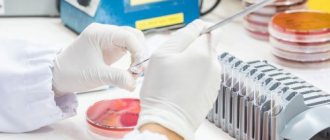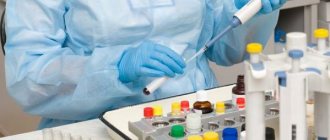In order for a laboratory test to show the correct result, each patient must strictly follow the rules of preparation for the procedure. So, before a urine test, you should not eat beets and carrots, since vegetables turn the sample material red and orange, respectively. It is contraindicated to eat spices, as they affect the smell. Each specialist, when issuing a referral, tells what preparation is required from the person in order to avoid repeated examination.
Analysis of 24-hour urine during pregnancy
In the process of bearing a child, a woman has to regularly take tests and undergo various diagnostic examinations.
Experts can assess the health of the expectant mother and the unborn child by the amount and biochemical composition of urine excreted. It is important to find out exactly how to collect daily urine during pregnancy. Proper preparation for analysis will allow you to obtain the most accurate results. Urine released per day contains substances that allow you to evaluate the functioning of the kidneys, urinary system, liver, heart and blood vessels. With the help of such a study, you can easily identify the inflammatory process in the body.
The daily urine intake for pregnant women in liters is 1-2 liters. The run-up is quite large. The volume of urine depends on the drinking regime, the duration of pregnancy, and the presence of concomitant pathologies. If your analysis is significantly more or less than normal, do not rush to panic. Doctors will prescribe additional research and give advice on correcting your diet and drinking regime.
Pregnant women often have to submit daily urine for laboratory analysis. There are several studies that require 24-hour urine collection:
- Study of daily diuresis. This analysis shows fluid retention in the body of the expectant mother. Allows you to determine the cause of toxicosis and severe swelling.
- Analysis for the identification of protein elements. This type of diagnosis is prescribed to patients with symptoms of nephropathy or late toxicosis.
- Study of the glucosuric profile of urine. The analysis shows the quality of carbohydrate metabolism. Prescribed in the presence of symptoms of gestational diabetes mellitus.
- Analysis according to Zimnitsky. In the laboratory, specialists study separately 24-hour, daytime, and nighttime urine.
The doctor usually explains correctly how to donate daily urine during pregnancy. Collect the discharge in a clean, sterile container. You can buy such a jar, with a volume of at least 2 liters, at any pharmacy. There is no need to send all your urine to the laboratory.
The liquid is mixed well and poured into a container with a volume of 100 - 150 ml. All urine collected per day may be needed in rare cases, only as prescribed by the gynecologist.
There are several simple rules for collecting daily urine, compliance with which will allow you to obtain the most accurate results.
- Use only clean, dry containers with tight-fitting lids.
- All urine excreted during the day should be collected in a jar.
- Urine should be stored in the refrigerator.
- After collecting the last portion of urine output, go to the hospital immediately. Tests can be transported without refrigeration for a maximum of 2 hours.
To facilitate the process of collecting daily urine from pregnant women, you can buy a special kit at the pharmacy. This kit consists of a container with marks applied to it, a transfer tube and a test tube. Remember that before visiting the toilet you need to carry out intimate hygiene every time to prevent the penetration of vaginal microflora into the biomaterial.
If all processes in a pregnant woman’s body proceed normally, she produces 1-2 liters of urine per day. In winter, these indicators are within the lower limits, and in hot weather with heavy drinking they increase. During the process of bearing a child, the patient’s kidneys experience increased stress, as they need to remove harmful substances from the body of the woman and the fetus.
If urine output is less than normal, oliguria is diagnosed. This alarming symptom can signal kidney pathologies, fluid accumulation in tissues, and poor diet.
Exceeding the daily urine norm is called polyguria. The cause of such symptoms may be the initial stage of diabetes mellitus, impaired functioning of the renal tubules.
Every pregnant woman must ensure compliance with the drinking regime. It is recommended to drink at least 1.5-2 liters of clean water per day. If you have to collect discharge during the day for analysis, carefully record the amount of liquid you drink per day, first courses and fruits eaten. In the absence of pathologies, about 80% of the fluid entering the body is excreted with urine, and the rest comes out with sweat and breathing.
The essence of studying urine
A general urine test for a pregnant woman is the simplest and most accessible way to find out and assess the health of the expectant mother. The clinical type of study of kidney discharge indicates the state of the urinary system, which bears the maximum load during these months. Therefore, the doctor gives directions to donate urine at each examination.
A general urine test is the easiest and most accessible way to monitor the health of the expectant mother.
Judging by the state of the liquid in the test jar, its color and smell, one can suspect that the expectant mother has not only diseases of the urinary organs, but also more serious diseases of other organs. Moreover, after radical changes in the expectant mother, the composition of urine changes. However, these changes are within the normal range. A general urine test gives the doctor information about the amount of fluid excreted from a woman’s body.
During pregnancy, changes occur, so it is possible to determine pregnancy by urine. The uterus grows, which causes a change in position and compression of other organs. When the kidneys and bladder are compressed, urine stagnation occurs. And this effect leads to the appearance of infection and its spread to other organs. To protect the expectant mother from serious diseases, the condition of her body should be monitored and preventive measures taken in time.
Daily diuresis
A certain amount of urine that is excreted from the body in 24 hours is called daily diuresis. It is this value that is an important parameter of the course of pregnancy. Due to the increasing need for fluid, the frequency of urination should increase.
In a healthy pregnant woman, the volume of fluid that enters the body must be completely released - its delay affects both the health of the expectant mother and the development of the baby
Any deviations from normal values indicate that the woman has impaired renal function. That is why practicing obstetricians and gynecologists pay special attention to the amount of urine released per day. Early diagnosis and timely treatment will help avoid possible complications.
Diuresis is calculated using the following algorithm: about 80% of the fluid is excreted from the female body with urine, the remaining 20% is excreted by the sweat glands.
The daily norm is calculated taking into account the increased fluid intake of a pregnant woman and the increased frequency of urination within 24 hours. A figure of 1.5 to 2 liters is considered normal.
Deviations from the norm are not observed if the expectant mother does not have any chronic diseases of the endocrine organs and urinary system, as well as complications during pregnancy.
The change in daily diuresis is influenced by such a pathological condition as gestosis (late toxicosis), which is characterized by:
- persistent deterioration in the woman’s general well-being;
- nausea and vomiting;
- persistent arterial hypertension;
- the presence of swelling in the extremities;
- excessive weight gain;
- convulsions;
- proteinuria (removal of protein from the body in the urine).
Proteinuria is a dangerous symptom indicating kidney damage; in order to identify the pathological process, it is necessary to conduct a biochemical analysis, constantly monitor blood pressure and diuresis
There are the following types of violations of daily urine output:
- An increase in the volume of excreted biological fluid to 3.5 liters is polyuria. Most often, this phenomenon is observed with a persistent increase in blood pressure and diseases of the endocrine system.
- A significant decrease in the amount of urine is oliguria. This pathological condition develops when the female body is dehydrated with frequent vomiting or diarrhea, inflammation of the renal parenchyma, hemolytic anemia, and blockage of the lumens of blood vessels (embolism).
- Lack of urination is anuria, which indicates the development of serious pathologies in the female body.
The causes of these conditions are both physiological and pathological factors. Any changes in daily diuresis cause anxiety in expectant mothers. However, you should not give in to panic - first of all, you need to consult with an experienced specialist and undergo a comprehensive examination.
Protein in urine: norms of all parameters in the table
It is important to promptly determine the protein in the urine and its indicators, because the higher they are, the worse the situation for a pregnant woman and her baby, since an elevated level is dangerous for the lives of both. In addition, a poor analysis may indicate the development of sepsis, deformation of the kidneys with subsequent failure, hypoxia and fetal malformations, placental abruption.
This is why protein testing must be done throughout pregnancy. This will allow you to carry the fetus to term and give birth to a healthy child. The following table will clearly demonstrate which levels of protein in urine are acceptable.
Glucosuric profile
During pregnancy, serious changes occur in the female body, the work of internal organs occurs at an accelerated pace. Active functional activity of the kidneys in some cases leads to the release of glucose in the urine. This phenomenon is designated by the medical term “glucosuria” and can be caused by various reasons.
In healthy pregnant women, urinary sugar excretion is not pronounced and cannot be determined using conventional laboratory techniques. In some cases, the symptom of renal glucosuria is observed as part of tubulopathies (kidney diseases with damage to the tubular system and impairment of their function).
Glucosuria most often appears in the second trimester, which is caused by increased blood circulation in the kidneys, changes in hormonal levels, and a decrease in the reabsorption capacity of the kidney tubules. With normal levels of glucose in the blood, glucosuria does not pose any threat to the expectant mother and her baby. However, the health status of such women must be treated with increased attention.
The causes of pathological glycosuria are renal dysfunction caused by concomitant chronic diseases. Risk factors for the female body's susceptibility to glucose excretion in urine are considered to be the presence of:
- genetic predisposition to diabetes;
- acute pancreatitis;
- poisoning of various origins;
- extrarenal glucosuria;
- carbohydrate absorption disorders;
- fetal weight more than 4.5 kg;
- pregnancy after 35 years;
- abnormalities of fetal development.
To diagnose glucosuria and clinically differentiate diabetes mellitus from physiological conditions, a profile glucosuric study is used, which allows assessing the increase or decrease in sugar excretion in daily urine. To perform this analysis, it is necessary to examine the glucose concentration in 3 portions of biological fluid.
On the eve of collecting biomaterial, a pregnant woman needs to limit her consumption of sweets and foods containing large amounts of carbohydrates and prepare three large, clean containers.
Samples for testing are collected as follows:
- at 7.00 a woman empties her bladder into the toilet;
- all subsequent portions of urine from 7.00 to 15.00 are collected in the first container;
- from 15.00 to 13.00 - to the second container;
- from 23.00 to 7.00 - on the third.
The collected biological material must be stored at a temperature of +4 to +8°C.
To conduct a glucosuric analysis, the urine collected per day in each container is thoroughly mixed and three samples are taken in an amount of 50-80 ml
The normal level of glucose in daily urine is from 105 to 120 ml/min. An increase in concentration indicates the presence of such diseases in a pregnant woman as:
- disorders of the cardiac and vascular systems;
- diabetes;
- Itsenko-Cushing's disease;
- adrenal insufficiency.
Preparatory activities
Many patients are concerned about receiving erroneous laboratory results and ask healthcare providers the following questions:
- what portion of biological fluid needs to be collected;
- whether some external factors can distort the final analysis data or not;
- is it prohibited to smoke before the sample collection procedure;
- Is it necessary to give urine strictly on an empty stomach;
- how to wash yourself properly;
- Is it possible to deliver yesterday’s urine for research?
All questions can be answered briefly - violation of the recommended urine test and its delivery leads to erroneous diagnosis of pathological processes.
That is why, in order to prevent the possibility of error during the tests, it is absolutely important for the patient to correctly submit and deliver the biological material.
Is it possible to collect urine for analysis in the evening?
- Do not drink alcohol or sweet carbonated drinks.
- Limit physical and psycho-emotional stress.
- Refrain from intimacy, eating spicy, salty and fatty foods, smoked foods and products containing natural or synthetic dyes.
- Do not take medications (if this is not possible, you need to inform the laboratory staff), vitamins, herbal decoctions and tinctures, diuretics.
If the patient has previously undergone an instrumental examination of the bladder (cystoscopy), urine is submitted for analysis no earlier than a week later. And for women during the period of monthly bleeding (menstruation), it is advisable to postpone the test - red blood cells can get into the urine and change the overall picture of the tests.
Before the urine collection procedure, it is extremely important to properly wash the genitals, otherwise mucus from the genital tract may get into the sample, which will increase the total protein parameters and affect the accuracy of the diagnosis. It is not recommended to use disinfectants while using the toilet; washing movements should be directed towards the buttocks.
The rules for collecting urine from a child are the same as for an adult; the baby needs to be washed well and wiped dry.
For children, pediatric urinals are used, which are freely available in pharmacies, but trying to “extract” biomaterial from a diaper or diaper is prohibited
To conduct a general clinical analysis, it is enough to deliver a sample of biological fluid in a volume of 60-80 ml to the laboratory center; at night, the kidneys produce more concentrated urine, as a result of which any deviations from the norm will be immediately noticeable.
Protein level determination
A certain amount of total protein in urine can be found in every person. During pregnancy, the normal value of this indicator is considered to be a concentration of up to 0.03 g/l. An increase in this figure is referred to as “proteinuria.”
However, this phenomenon is not only a sign of a pathological process (cystitis, urethritis, nephritis), but may also have physiological causes:
- the predominance in the diet of a pregnant woman of a large amount of protein foods - dairy and meat products;
- severe stress;
- moral exhaustion due to worries about the upcoming birth.
The conditions for collecting biological fluid are simple and differ little from all the above rules. It is important for a pregnant woman to control urination; on the eve of collecting urine, exclude salty and acidic foods from the diet and limit meat consumption.
The main indication for determining the level of total protein in daily urine is the diagnosis of such a dangerous disease for the expectant mother as gestosis, which occurs with edema
Before each emptying of the bladder, you need to wash the external genitalia; all portions of urine are collected in a large container prepared in advance. On the morning of the next day, the last portion is collected, the total volume is measured, then the urine is poured into a special small container in the amount of 100–150 ml and delivered for analysis.
Of course, carrying out constant examinations is not a very pleasant companion to pregnancy, but the positive aspects of the period of waiting for the baby to be born will smooth out these sensations - you need to remember that many changes in health status can be easily diagnosed by the state of urine. In conclusion of all of the above, I would like to note that it is very important to donate urine for research to proven modern laboratory centers.
Leukocyte norm
During pregnancy, monitoring the leukocyte level in the urine is mandatory. The normalized indicators are 6 units per field of view. In accordance with the Nechiporenko system, the norm of leukocytes is equal to 2 thousand per mm.
An increase in leukocyte levels in the urine is evidence of inflammatory principles. Most often it affects the functioning of the kidneys, bladder or urinary tract.
The purpose of leukocytes is to fight infectious pathogens that penetrate the body. If they penetrate, the number of leukocyte cells increases.
10-15 units of leukocytes are indicators of the initial stage of inflammation. If the amount exceeds 40 units, one should speak of an advanced process of inflammation that requires urgent therapeutic measures. Renal inflammation is indicated by a white blood cell count exceeding 50 units. Pyelonephritis most often affects pregnant women, which is caused by acute pressure from the growing uterus on the kidneys. In case of a slight increase in the leukocyte level, a violation of the rules of urine collection technique is likely.
Indications for analysis
Not all patients understand the importance of laboratory testing of 24-hour urine. Doctors prescribe such diagnostics to determine the specific gravity of urine and identify the ratio of substances in biological fluid. Diuresis releases glucose, salts, creatinine, bilirubin and other components. Each indicator provides specialists with information about the health status of the expectant mother and fetus.
- Creatinine. The amount of this substance in the urine can determine the quality of kidney function. If there is too much of it, one can assume the development of an inflammatory process, the initial stage of renal failure. These diseases do not show obvious symptoms at an early stage, so diagnosing them can be quite difficult.
- Urobilin. The substance allows you to evaluate the functioning of the liver and gallbladder. With the help of laboratory research, various dangerous pathologies and congestion can be identified.
- Glucose. A healthy patient should not have this substance in her urine. If glucose has been detected, the pregnant woman’s blood must be further examined in the laboratory to rule out the development of diabetes mellitus. Sometimes such an alarm turns out to be false.
In late pregnancy, a woman may develop gestosis. This pathology is accompanied by the appearance of ketone bodies in urine. If the fetus experiences a lack of glucose at night, fats are broken down in the pregnant woman’s body, and acetone appears in the morning urine.
The permissible protein content in daily urine is 0.03 g/l. If this indicator exceeds the norm, you need to undergo additional examination of the kidneys, since such a symptom occurs when inflammation develops. High protein content is observed with glomerulonephritis, pyelonephritis, kidney failure or gestosis.
Ketone bodies
These substances in the urine indicate that the body is undergoing some kind of intoxication (alcohol, inflammatory). They also appear in diabetes mellitus in the stage of decompensation and, perhaps, also during hunger.
If bilirubin appears in the urine of a healthy person, this is a sign of pathology. Normally, it does not exist in this biological fluid. Hepatitis of various origins, obstructive jaundice, cirrhosis and liver neoplasms are diseases in which bilirubin can be detected in the urine. But the product of its metabolism, urobilinogen, appears in hemolytic anemia.
Preparation and collection of urine
To obtain the most accurate and reliable test results, you need to collect urine correctly and follow several important rules. Be sure to pay attention to your diet. You should exclude too spicy and salty foods from your daily menu. Smoked foods and products containing dye are prohibited. On the day of urine collection, drink at least 1.5 - 2 liters. liquids. This may include teas, fruit juices, and first courses.
The first morning portion of urine is not collected in a container, but the time of urination must be recorded. In a notebook, also write down the amount of liquid you drink (approximately).
Collecting urine for the Zimnitsky test
If a pregnant woman experiences symptoms of the development of kidney pathologies, the doctor recommends a laboratory test of urine using the Zimnitsky method. It is necessary to collect secretions for such analysis according to a certain schedule. We collect a portion of urine at a certain time, the secretions are distributed into different containers.
You will need about 8 tightly sealed jars. We visit the toilet for the first time at 6-00 in the morning, but we don’t collect urine. The time of urination is recorded. Then we go to the toilet every 3 hours, each time collecting the waste in separate containers. If any containers are left empty, they must also be submitted to the laboratory, indicating the time of the expected urination, which did not occur.
Study of glucosuric profile
In late pregnancy, the risk of glucose entering the urine is quite high. It is because of this that at this stage doctors recommend studying the daily glucosuric urine profile. The increasing size of the fetus affects the functioning of the pancreas and kidneys.
Diuresis should be collected according to the following scheme.
- The first morning urination is performed in the toilet. We fix the time.
- We collect the first portion of urine in the morning (from 9 a.m. to 2 p.m.).
- The second portion is placed in the container (from 14 to 19 hours).
- Third evening gathering (from 19 to 23 hours).
- Night collection (from 23 to 4 am).
- The last container is filled from 6 to 9 am.
All portions of collected urine cannot be mixed with each other; they must be stored in the refrigerator. If the results of the study differ from the norm, doctors can assume the development of pathologies of the kidneys, adrenal glands, diabetes mellitus, and the development of physiological abnormalities. To make a more accurate diagnosis, you need to additionally donate blood for sugar.
Protein test
Late toxicosis or gestosis often plagues pregnant women in the later stages. This complication is often diagnosed in patients who have any chronic pathologies. If gestosis is suspected, a 24-hour urine test for protein elements is prescribed. A woman can also evaluate her urine visually - if it changes color, becomes cloudy, or sediment appears, most likely it contains a lot of protein.
For pregnant women, contents of up to 0.03 g/l are allowed. protein structures. If there are many more of them, then the kidneys are not functioning properly. This is due to increased load and inflammatory processes in the organs of the genitourinary system. If such results persist for a long time, hospitalization of the patient is necessary. Doctors will do everything possible to normalize kidney function and maintain pregnancy.
For such a laboratory test, you will need a small portion of daily urine. Doctors study the discharge for transparency, density, and color. In any case, a woman should not worry too much. Trust the doctor, and under no circumstances self-medicate. In some cases, to normalize the indicators, a special diet and a course of medications that will not harm the fetus will be sufficient.
Update date: 10/01/2018, next update date: 10/01/2021
Features of a blood test: why preparation is needed
Proper preparation for a blood test is the key to a reliable result.
A blood test is a very informative procedure that allows you to identify or suspect diseases at a very early stage. Sometimes the symptoms have not yet manifested themselves, but the blood counts have already changed. For this reason, it is recommended to donate blood for preventive purposes annually, or better yet, once every six months.
It is not always possible to make or even suggest a diagnosis based on a blood test alone. But the result will show that there is a malfunction in the body and will set the direction for further examination. According to research, a blood test contains up to 80% of all information about the body.
The reliability of the analysis is determined by the laboratory, blood sampling technique and proper preparation, which entirely depends on the patient. First you need to find out what you can’t eat before donating blood, what drugs affect clotting and what you should avoid so that the result is obtained without errors.
Blood is very sensitive to any changes in the body; to obtain the most accurate results, all the nuances that affect blood parameters are important.
These include certain foods, medications, in some cases the phase of a woman’s cycle, physical activity and stress levels, alcohol and smoking, and time of day.
When is the best time to donate blood? It is believed that it is best to donate blood in the morning. This makes it easier for the body to tolerate blood loss, and the result itself is more reliable. Doctor's advice and preparation should not be neglected.
Elevated or decreased blood counts can lead to additional testing and unnecessary waste of money on other tests. However, doctors, as a rule, always assume the possibility of improper preparation, therefore, if a violation or malfunction of the body is suspected, the blood test is taken several more times, possibly in different laboratories.
How the patient behaves on the eve of visiting the laboratory will directly affect the results of the study. There are a number of mandatory rules for preparing for the test. Violating them may result in the doctor receiving erroneous data.
At best, the patient will have to retake the test, and at worst, distorted results may become the basis for an incorrect diagnosis and treatment for a disease that he does not have. So, the most common question is: can I eat anything or drink any drinks in the morning before visiting the laboratory?
There is only one answer: a general blood test should be taken only on an empty stomach!
Moreover, at least 7-8 hours should pass between dinner the day before and the collection of her sample. At the same time, you should not eat fatty, spicy, fried or sweet foods for dinner. You cannot drink tea, coffee, juices, compotes - this is also food.
In the morning, you can only drink a glass of water on an empty stomach, and then without gas, flavorings, dyes, lemon juice and other additives. This can even make it easier to draw blood from patients whose veins are “empty” in the morning or whose blood is too thick. On the day of delivery, you should also not smoke in the morning - at least 1-2 hours before the procedure.
There are several more important points, ignoring which can lead to distortion of the objective parameters of the blood formula and, accordingly, their incorrect interpretation by the doctor.
Such undesirable factors include:
- protein diet or fasting for weight loss;
- excessive physical overload;
- emotional stress before taking the test;
- visiting a steam room or sauna on the eve of the study;
- taking a number of medications that distort test results;
- X-ray exposure;
- many physiotherapeutic procedures;
- drinking alcoholic beverages the day before.
You should not drink alcohol before taking tests, as it causes a number of biochemical reactions, as a result of which the concentration of lactate, uric acid, triacylglycerides in the blood increases, and the glucose level decreases. This way you can get a wrong picture of the patient's condition.
Types of research
Currently, there are many different types of urine tests. Mothers who carry babies under their hearts undergo quite a few different laboratory tests. They are necessary in order to promptly identify various pathologies in future babies.
A general urine test is a basic test that is prescribed to all pregnant women. This test will show how the kidneys work and the outflow of biological fluid through the urinary tract. In this case, a number of basic indicators are assessed. These include: specific gravity or density, urinary sediment, and pH. A comprehensive assessment of these indicators allows doctors to identify various pathologies during pregnancy that can arise at various stages.
Testing urine for protein helps doctors identify pathologies in both kidney function and other concomitant diseases of internal organs. Many cardiovascular diseases occur with changes in basic urinary parameters, including the appearance of protein. With a mild course of the pathology, traces of protein are found in the urinary sediment. Severe illnesses can cause proteinuria - massive loss of proteins into the urine.
Quite often, the appearance of such a sign appears in women who have signs of gestosis. Typically, these clinical symptoms appear during the third trimester. In some cases, gestosis can appear at 20-22 weeks of pregnancy. The appearance of protein in the discharged fluid is a very important reason for an unscheduled visit to a gynecologist.
If a pregnant woman begins to swell greatly, then in this case it is necessary to collect daily urine for analysis. In such a situation, certain toxic substances accumulate in the separated biological fluid, which show how disrupted various metabolic processes are in the female body.
Collecting urine per day allows you to identify many hidden kidney pathologies.
A daily analysis is collected strictly according to time. All indications of urinary excretion are recorded on a special form. The separated liquid is collected in a special container. Its volume is 2.5-2.7 liters. In appearance, it somewhat resembles a jug with a wide neck and a relief handle.
It is no coincidence that the container was given this shape. It provides convenience for collecting biological fluid for research. After each filling of such a container, doctors recommend carefully screwing the lid on. This will prevent various microbes from getting there from the air.
Urine collected using the daily method is stored only in the refrigerator. Low temperatures are necessary for the results of the study to be reliable. In this case, it is very important to prevent freezing of biological material.
Many expectant mothers make the mistake of bringing the entire daily volume of collected urine to the laboratory. This is not required. To perform a clinical analysis, it is enough to pour about 80-100 ml of the collected liquid into a smaller container. In this case, during the test, you should definitely tell the laboratory assistant what the total daily volume of fluid collected was.
The Zimnitsky study is prescribed to all expectant mothers suffering from chronic glomerulonephritis or pyelonephritis. In this case, the analysis calculates the formed elements - leukocytes and erythrocytes. This study is usually prescribed when a pregnant woman is kept in hospital. In this case, conducting this research is much easier.
This analysis is collected in eight separate containers. They should be collected every three hours. Many pregnant women note that collecting such an analysis was quite difficult for them, since they did not always want to urinate at a certain time. The first collected portion of liquid must be removed.
All collected urine is subsequently mixed and sent to the laboratory in a separate container, specially prepared for this purpose.
A urine sterility test is a rather rare laboratory test used to diagnose kidney diseases caused by various microorganisms. Such studies are usually prescribed by nephrologists. Determination of pathogenic microbes in urine requires mandatory prescription of appropriate therapy.
Correct collection technique
If you neglect the technique of collecting the test sample, there is a high probability of obtaining an incorrect result. For this reason, it is advisable to consider the following recommendations regarding how to properly collect urine:
- During the 24-hour period before urine collection, you should refrain from performing any physical activity or physical overexertion. Otherwise, the content of the protein component in the urine may increase.
- It is prohibited to eat foods containing excess salt, hot pepper or vinegar. Excessive consumption of meat products can also lead to errors in urine analysis.
- Pregnant women are not recommended to consume alcohol and tobacco products. Moreover, this rule applies not only to specific tests, but also to the entire course of pregnancy.
- For analysis, preference should be given to exclusively clean containers. It is ideal to purchase special sterilized containers at pharmacies.
- A sample of material for analysis should be collected in the morning after waking up. This choice is due to the fact that during night sleep the kidneys function more actively, as a result of which the urine becomes most concentrated. The difference between night urine and day urine comes down to color parameters: it has a noticeably dark shade.
- Before filling the container with urine, you should perform genital hygiene using baby soap.
- It is necessary to collect a medium portion of urine. To do this, you should relieve yourself into the toilet for a few seconds, then into a jar, and flush the remaining portion of urine into the toilet again.
- During transportation of the analysis to the laboratory, it is necessary to ensure that there is no shaking, which can cause the appearance of foam. This can directly affect the reliability of the diagnosis.
- The last rule is that the analysis must be transported to the laboratory within a couple of hours.
How to prepare for the collection?
Every expectant mother should know how to properly collect and take a urine test. Violation of the rules of personal hygiene quite often leads to the fact that the results of urine tests become incorrect.
Typically, such consequences are manifested by an increase in the number of leukocytes in the urine. This condition is called leukocyturia. It occurs in many pathologies, but can also appear if the rules for collecting material for research were violated. In this situation, white blood cells enter the urine from the vagina and vulva, and not from the urinary tract.
Before taking this test, you should not eat beets or other brightly colored foods. They may turn the urine sediment red or orange. This will contribute to the fact that the result of the analysis will be interpreted incorrectly by specialists. If, after all, a pregnant woman ate beets or strawberries on the eve of a urine test, then she should definitely notify her doctor about this.
The most informative analysis is taken on an empty stomach. At this time, as a rule, the urine pH is in the physiological range. Normally it is slightly acidic. However, in some pathologies, a pH shift occurs to the strongly acidic or alkaline side.
Tests taken in the evening especially often lead to unreliable results.
You will still need to follow a diet the day before collecting urine for testing. To do this, you should limit your menu to meat products, sausages and smoked meats. Excessive intake of table salt into the body can lead to distortion of the results obtained in the future. Also, if possible, the expectant mother should limit her medication intake. Before doing this, she should definitely consult with her gynecologist.
Doctors recommend limiting strong physical activity for pregnant women 1-1.5 days before the test. At this time, only calm walking at a slow pace is allowed. Experts have found that even climbing several flights of stairs can result in traces of protein appearing in a pregnant woman's urine test.
Minimum intervals between different types of donation (in days)
| Initial procedures | Subsequent procedures | |||
| blood giving | plasmapheresis | plateletpheresis | leukocytapheresis | |
| Blood giver | 60 | 30 | 30 | 30 |
| Plasmapheresis | 14 | 14 | 14 | 14 |
| Thrombocytapheresis | 14 | 14 | 14 | 14 |
| Leukocytapheresis | 30 | 14 | 14 | 30 |
The blood service institution reserves the right to increase these intervals depending on the needs of medical organizations for certain components of donor blood. You can find out about the current need by contacting the blood service institution you are interested in or using the donor traffic light.
So that there is no protein
To ensure that protein is not detected in the urine, a pregnant woman needs to closely monitor her lifestyle.
In this case, both diet and lifestyle, as well as urine collection itself, can play an important role. Often, the first detected protein in the urine subsequently disappears based on the results of subsequent repeated tests.
Most likely, this indicates that when obtaining the first result, the collection rules were incorrectly followed. It is also not recommended to subject the body to severe physical stress on the eve of the test, since the latter can also provoke the appearance of protein in the urine.
How to hand over and collect correctly?
To get reliable results, you need to know how to properly collect and submit urine for testing. Neglecting the rules gives another reason for concern and excitement, since for this reason the wrong conclusion is drawn. Studying the secreted fluid makes it possible to detect pregnancy in the early stages, determine the gestational age by analysis and obtain other data
That is why it is important to know how to pass it correctly, and before that to collect the material
Collecting urine for study
It should be noted right away that a woman should prepare for the study several hours in advance. The material is collected in a special sterile container to prevent microorganisms from entering the material, and then the following mandatory rules are observed:
- Before collection, you need to carry out hygienic procedures so that vaginal discharge does not get into the urine. In this case, collect with a tampon or cotton wool in the vagina so that the discharge does not fall into the container.
- One day before collecting material for analysis, you must stop taking any medications.
- Before donation, you should not enrich your diet with fruits and foods that color the urine.
- It is better to abstain from sexual relations.
- It is necessary to collect urine from the middle portion (morning), covering the vagina with cotton wool. That is, the first small volume of urine is passed, and the next portion can be collected in a jar without interrupting urination.
- The resulting material must be delivered to the laboratory within 1-1.5 hours.
It is better to collect the first morning urine for general analysis in the morning. By following these rules, a pregnant woman will calmly wait for the results. The test should be taken to the laboratory to which the doctor referred you. As a rule, urine from pregnant women is taken at the antenatal clinic at their place of residence, but it can also be tested in a paid laboratory. The jar with the material is given to the laboratory, after having written your last name on it. Often the jar is placed on a direction sheet.
Independent determination of the presence of body problems in urine
- Urine color. It should not be very dark, the normal color is yellow or amber yellow.
- Smell. It should be absent or blurred. If the smell is acidic or “corrosive”, then you should consult a doctor.
- Transparency. The normal state of urine is clear; if there is turbidity, this indicates the presence of bacteria or epithelium.
- Volume. Normal morning volume is 70 ml. Very frequent trips to the toilet indicate that the baby is putting a lot of pressure on the bladder. This is especially dangerous in early pregnancy.
We also recommend reading: What to take to the maternity hospital?
Interpretation of analysis results:
- Density. It should be in the range of 1003 – 1035. This is the proportion of various substances in the analyzed material.
- Acidity. Normal range is 5.0 – 7.0.
- Protein. No more than 0.033 hl., but mostly absent.
- Leukocytes. 5 is normal.
- Red blood cells. No more than 3, but it’s better when they are absent.
- Epithelium. Slight presence is acceptable. Exceeding the permissible level indicates the occurrence of an inflammatory process in the urinary tract.
- Salt. Must be absent, but slightly present is acceptable. This indicator does not pose a danger to a pregnant woman.
- Glucose. Must be missing. A level of up to 0.083 mol is allowed; if this level is exceeded, you should consult a doctor.
Urine culture test
In addition to the above tests, a pregnant woman must undergo a urine culture test (tank culture), which shows what bacteria are in the body of the expectant mother. In laboratory conditions, urine is used to grow colonies of bacteria. This type of analysis requires more time than previously described types and a special temperature regime. Using a culture tank, you can determine the resistance of bacteria to drugs. In this way, better and gentler treatment can be provided, reducing risks to the fetus.
How is the culture test procedure performed? Previously collected urine is applied to a bacteria-rich medium. Urine soaked in bacteria is divided into test tubes and placed in a thermal cabinet, which creates optimal conditions for the development of bacterial colonies. After maturation, a specialist studies the bacterial colonies and determines the type of bacteria from the colonies. All studies take 5-10 days. The tank culture test is taken only 2 times: upon registration and in the 3rd trimester.
Introduction
Today, all pregnant women are registered and during this period are required to undergo all mandatory blood and urine tests (general or daily). In this way, it is possible to monitor the progress of pregnancy as completely as possible and it is possible to nip in the bud most of the unwanted changes in the mother’s body or any other problems. Urine testing during pregnancy is the most common test that expectant mothers undergo during pregnancy. Why this is so important, why adhere to the rules for taking tests, and the stages of passing the testing procedures will be written below.
How to donate blood?
There are several general recommendations that are suitable for taking all types of blood tests - from a finger or from a vein.
- The day before donating blood, do not take medications. If this is not possible, consult your doctor about how long after taking the medication it is removed from the body.
- Spicy and heavy foods should also not be consumed the day before the test. Alcohol and smoking are generally contraindicated for women during pregnancy. Plus, they can change the level of certain substances in the blood.
- Physical and emotional overload during pregnancy is also undesirable, they can cause hormonal and biochemical changes in the blood, so if you feel very tired, or, conversely, excited, go to the laboratory another time. Even if you are just tired on the road, it is better to sit in front of the office for 10-20 minutes and relax.
- If you are scheduled to donate blood and undergo some kind of physiotherapeutic procedure on the same day, then you need to donate blood first and proceed with the rest after.
- One of the most important conditions is to donate blood on an empty stomach. Only before the clinical test - blood from your finger - can you have a light snack. Some blood indicators after eating are similar to symptoms of inflammation, infections and allergies.
- The preferred liquid is plain water, not carbonated or sweet. Juices, tea, milk contain various chemicals that will affect the test result.
- It is easiest to observe the required period without food, no less than 8 and no more than 14 hours, in the morning, after a night's sleep. In addition, the time from 8 to 11 am is best suited for going to the laboratory also because the standards with which your readings will be compared are calculated based on the statistics of blood values taken in the morning.
How to donate biofluid correctly?
Pregnant women should know that it is not difficult to correctly carry out all procedures for taking the test. A bad result can only occur if the rules are grossly violated.
Sterility has already been mentioned many times - it is necessary and important to ensure it. Tests usually have to be taken in the morning
At night, the kidneys work in a slower mode, so it is recommended to collect material for analysis in the morning - due to its higher concentration.
Video:
Before filling the jar, you need to wash yourself with soap. In order not to distort the results of the analysis, you must carefully insert the tampon into the vagina.
The container for collecting biofluids must be sterile. Special utensils, which are sold in any pharmacy, are ideal. The sterility of this vessel meets all requirements.
You need to fill the container halfway. The first and last portion of urine should be directed into the toilet, the middle part should go into the jar.
When transporting the analysis, it must be protected from shaking and agitation. Two hours are given to deliver the material to the laboratory.
Collecting fluid for analysis through a catheter
The process of taking samples by penetrating a catheter is called catheterization.
Many pregnant women have to face this procedure as prescribed by a doctor. If the collection of biological material is carried out by an experienced medical specialist, then this will not cause the woman excessive discomfort.
The analysis is carried out according to the following algorithm:
- Before inserting the catheter, it is necessary to thoroughly clean the external genitalia.
- Before starting the procedure, the woman should lie on her back and spread her legs.
- Before catheterization, a tray is installed between the patient’s legs.
- Before inserting the catheter, the doctor spreads the labia majora with one hand, and with the other, treats the urethra and labia minora with furacillin solution.
- The medical specialist washes his hands several times with a soap solution and treats them with an alcohol solution.
- The catheter is treated with Vaseline, wearing sterile gloves and using clean tweezers.
- Using sterile tweezers, the soft edge of the insertion device is clamped and then smoothly inserted into the urethra.










